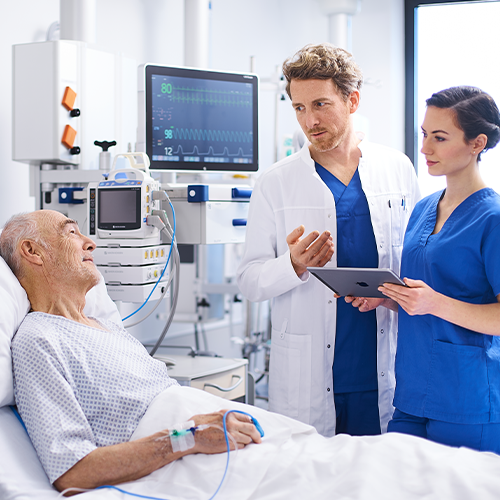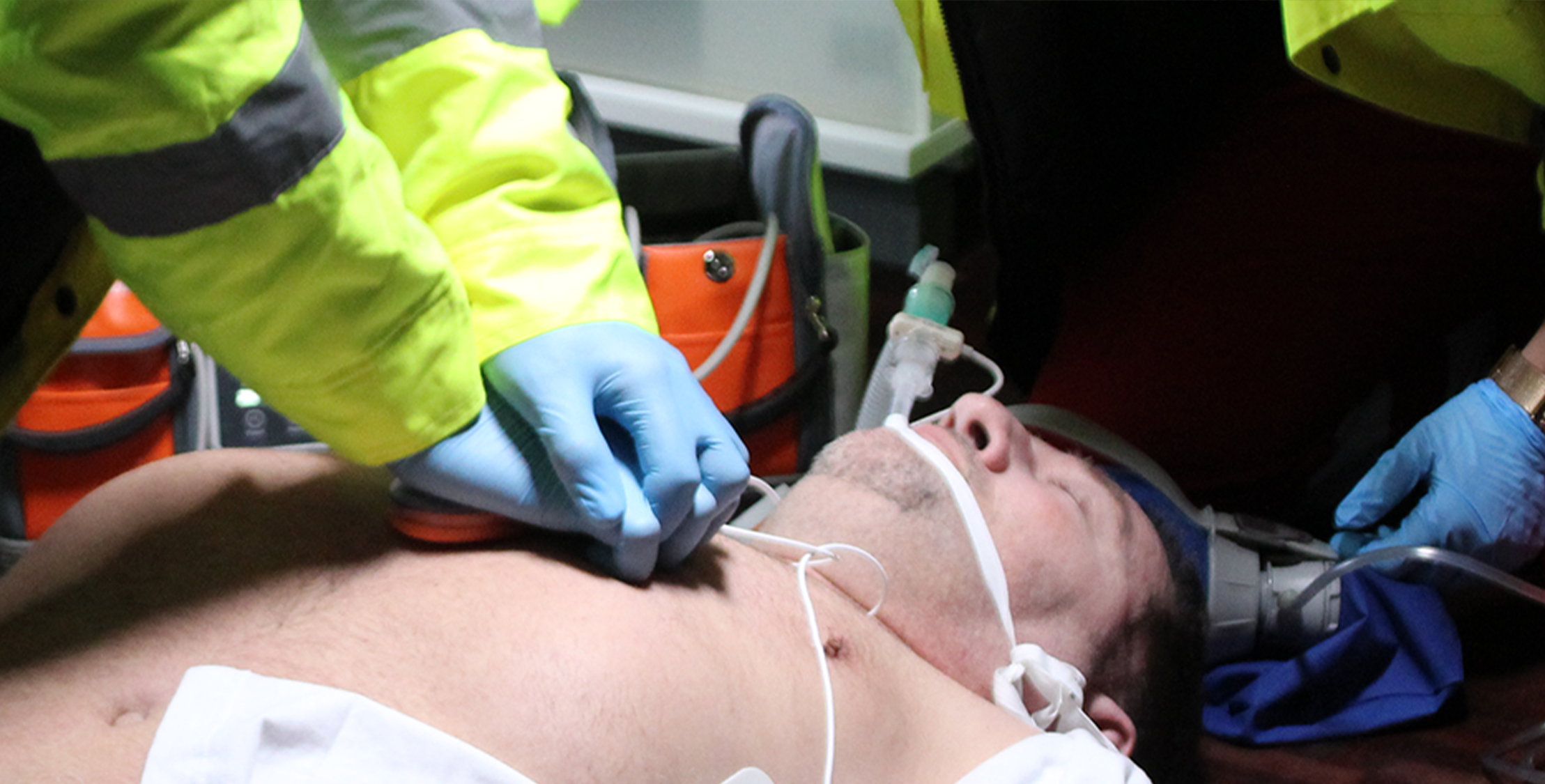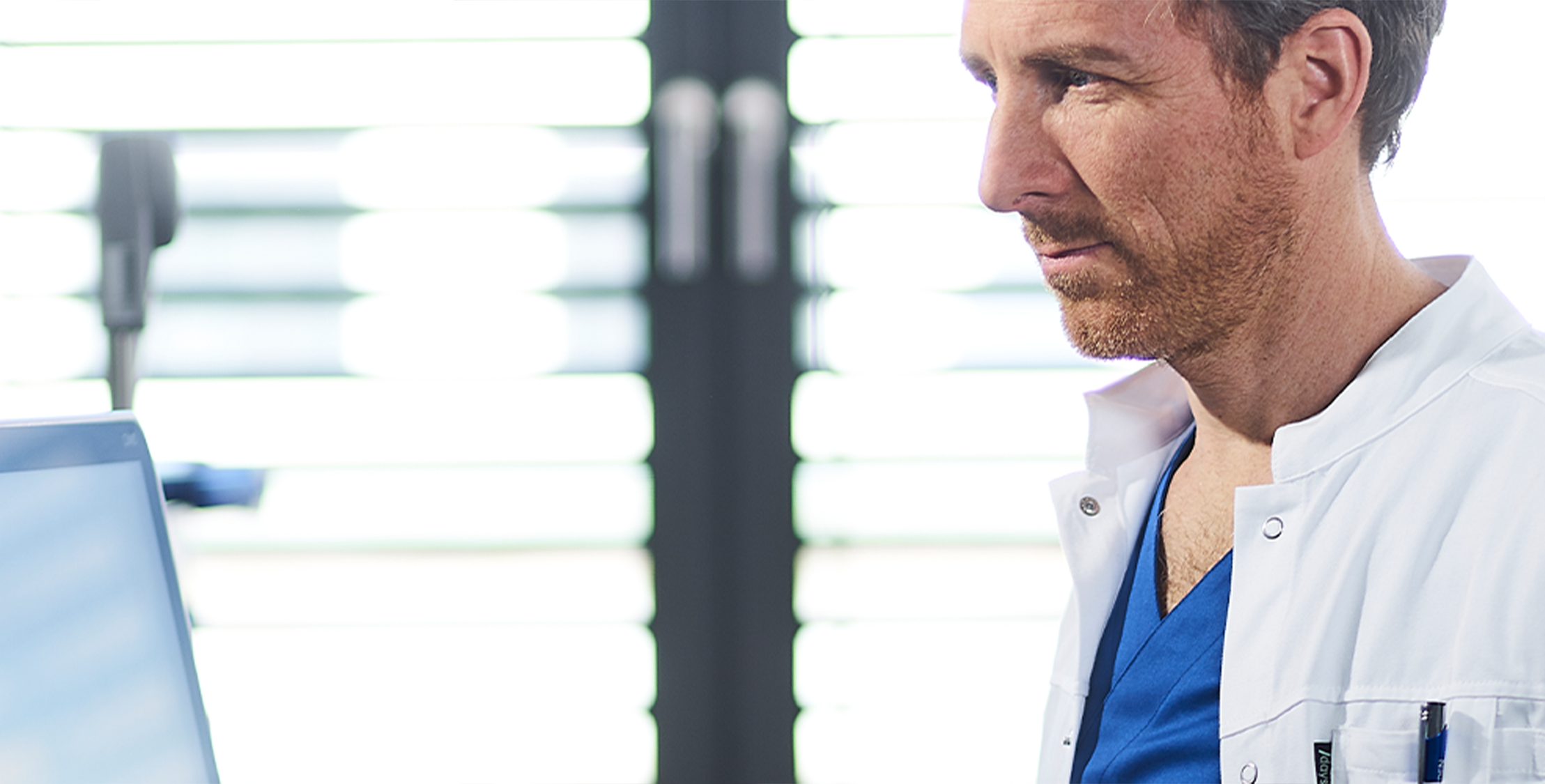

Решения
Вы ищете информацию о конкретном продукте? Пожалуйста, имейте в виду, что этот сайт все еще переводится, и некоторые материалы могут отображаться на языке оригинала. Мы работаем над завершением перевода и благодарны вам за понимание.
Интенсивная терапия
Раннее выявление отклонений и своевременное вмешательство имеют решающее значение в интенсивной терапии. Nihon Kohden использует передовые технологии для преобразования невидимых физиологических сигналов в видимые показатели на мониторах для комплексной оценки состояния пациента. Интегрированные также в аппараты ИВЛ и дефибрилляторы, эти технологии обеспечивают эффективный мониторинг и лечение в условиях интенсивной терапии.
Данные пациентов беспрепятственно распределяются и интегрируются в больничные системы, что обеспечивает полноценный контроль за состоянием пациентов и приводит к улучшению общих результатов лечения.

Догоспитальный этап
Комплексная помощь пациентам, включая вмешательства на догоспитальном этапе. Nihon Kohden обеспечивает лечение на этом остром этапе, предоставляя медицинским работникам высококачественные устройства, необходимые с самого начала цикла оказания медицинской помощи, от непрерывного мониторинга до интубации, дефибрилляции и реанимации.
Это оборудование позволяет проводить ранние и эффективные вмешательства, оптимизируя безопасность пациентов.

Нейромониторинг (ОИТ)
Кардиомониторинг и мониторинг дыхания являются стандартной практикой в отделении интенсивной терапии (ОИТ) на сегодня, в то время как электроэнцефалография (ЭЭГ), которая играет решающую роль в определении текущего состояния пациента, не является таковой. Несмотря на трудности, связанные с мониторингом ЭЭГ в ОИТ, в этот критический период лечения пациента, Nihon Kohden предлагает множество решений для мониторинга ЭЭГ.
Наш инновационный беспроводной нейромодуль CerebAir упрощает подготовку и измерение, обеспечивает быстрое получение данных ЭЭГ и может использоваться для долгосрочного мониторинга. Врачи получают лучшую клиническую поддержку благодаря алгоритмам обнаружения судорог, включенным в программу анализа трендов ЭЭГ с проводным 38-канальным блоком, что позволяет быстро выявлять судорожную активность и, следовательно, своевременно проводить необходимую терапию. Упрощенный мониторинг ЭЭГ доступен с модулями на мониторах пациентов Nihon Kohden, данные ЭЭГ могут отображаться также и на центральной станции.
Таким образом, ЭЭГ в отделении интенсивной терапии может стать стандартом мониторинга как часть комплексной медицинской помощи пациентам в критическом состоянии.

Лаборатория (in-vitro диагностика)
Nihon Kohden является новатором в области in-vitro диагностики (IVD) и предлагает инновационные решения для лабораторий. Известные своей точностью и надежностью, решения IVD от Nihon Kohden позволяют медицинским специалистам использовать передовые технологии, которые повышают точность и эффективность диагностики.
С приверженностью к инновациям и качеству, Nihon Kohden продолжает переопределять стандарты в лабораторной диагностике, обеспечивая превосходное качество оказания медицинской помощи по всему миру.

АНД для общественного доступа
Внезапная остановка сердца, которая случается вне больницы, продолжает оставаться ключевой проблемой общественного здравоохранения. В настоящее время первичным методом восстановления нормального сердечного ритма при остановке сердца является использование автоматических наружных дефибрилляторов (АНД). Поставляя АНД по всему миру, Nihon Kohden играет важную роль в обеспечении возможности проведения дефибрилляции в общественных местах.
Эффективный контроль за состоянием АНД имеет решающее значение для обеспечения их постоянной готовности к использованию. Удаленная система контроля АНД – наиболее эффективное решение для достижения оптимальной производительности устройства и усовершенствования процедуры контроля.

Диагностика
Качество усилителей Nihon Kohden обеспечивает высокое качество сигнала электроэнцефалографии (ЭЭГ) и электромиографии (ЭМГ), в результате клиницисты получают точные, клинически значимые данные. История компании Nihon Kohden началась именно с ЭЭГ, и, имея опыт более 70 лет, мы разрабатываем надежные технологии в области медицинской техники.
Наше программное обеспечение для обработки клинических данных и отчетов эффективно используется в кардиологии и неврологии, оптимизируя рабочий процесс для сопутствующих исследований. Кроме того, эти данные могут быть беспрепятственно распределены в соответствующие больничные информационные системы через HL7 и DICOM.
Уникальная технология Nihon Kohden поддерживает кардиологические исследования, делая невидимые аспекты состояния здоровья сердца видимыми для клиницистов для эффективной диагностики событий и заболеваний.

Палата
Для обеспечения эффективного лечебного процесса перевод пациента из отделения интенсивной терапии в общую палату имеет ключевое значение. В палате пациенты занимаются физической активностью и ходьбой в рамках процесса восстановления. Nihon Kohden предлагает оптимальное решение для мониторинга, которое способствует созданию комфортной среды, обеспечивая при этом надежный мониторинг с помощью беспроводных технологий. Кроме того, для организации надлежащего мониторинга и лечения в палатах мы предоставляем решение для управления сигналами тревоги. А наши аппараты для неинвазивной вентиляции легких повышают эффективность и оптимизируют клинические процессы.

Долгосрочный нейромониторинг
Отделение лечения эпилепсии играет важную роль в диагностике и лечении эпилептических приступов. Специальные палаты оборудованы для долгосрочного мониторинга с возможностью видеозаписи для получения синхронизированных данных ЭЭГ и визуальной информации о судорожной активности пациента. Прямая кортикальная стимуляция позволяет точно разместить стимуляционные электроды и / или провести другие хирургические вмешательства.
В лаборатории сна проводятся полисомнографические (ПСГ) исследования для диагностики нарушений сна, при этом осуществляется мониторинг ЭЭГ, насыщения крови кислородом, частоты сердечных сокращений и дыхания во время сна. ПСГ может также включать мониторинг движения глаз и конечностей с использованием электромиографии (ЭМГ). Камеры с инфракрасными светодиодами позволяют записывать видео в режиме ночного видения, таким образом врачи получают данные ЭЭГ, синхронизированные с визуальной информацией о пациенте.

Медицинские IT-решения
Nihon Kohden предлагает готовые, легко интегрируемые мультифункциональные решения для оказания помощи пациентам во всех областях медицины. Являясь экспертами в области неврологии, мониторинга пациентов, кардиологии и респираторной терапии, мы предлагаем клинические решения, обеспечивающие доступ к всесторонней информации, что позволяет ставить более точные диагнозы, обеспечивать оптимальную респираторную поддержку и, в конечном итоге, добиваться лучших результатов лечения.
